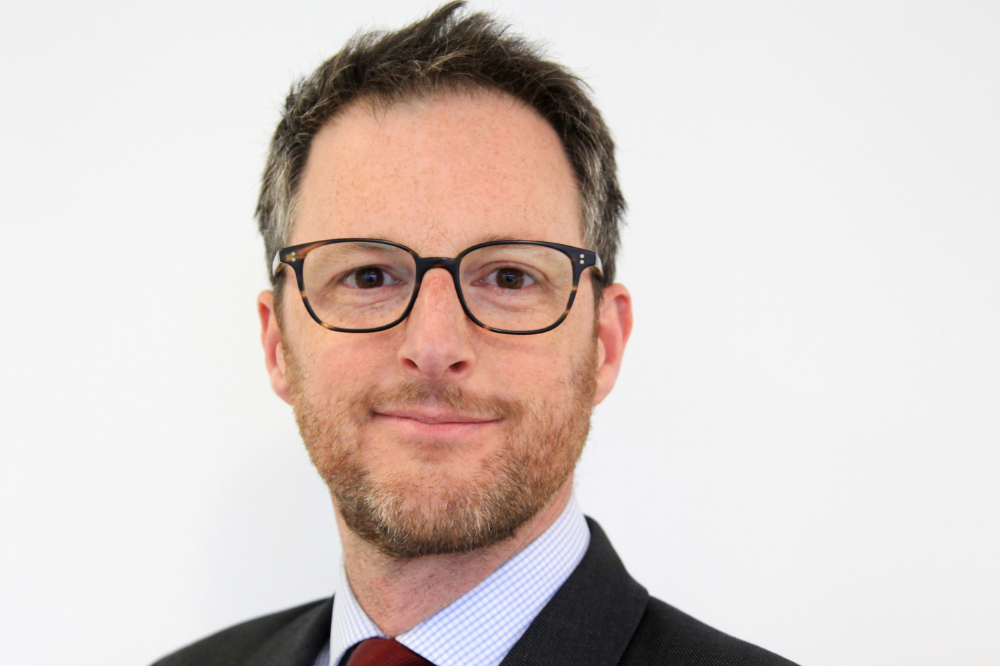

In November 2021, the UK will play host to COP26, the 26th UN Climate Change conference in Glasgow. The summit, which will see delegates including heads of states and climate experts come together to agree on coordinated action to tackle climate change, is a key date in the diaries of AXA XL’s director of strategic market development, Claudia Thyme (pictured above) and director of sustainable development, Chip Cunliffe (pictured below).
Find out more: Learn everything you need to know about AXA XL here
COP26 epitomises the collaboration required to solve climate change risk which represents a challenge that goes beyond any one company, industry or country. The insurance and risk management industry often talks about the protection gap when it comes to natural catastrophes, Thyme said, but the scale of this concern is revealed in the numbers – between 2010 and 2020, natural catastrophe total losses averaged around $131 billion, of which approximately $83 billion were uninsured losses.
“That’s the protection gap,” she said. “However, closing this protection gap is not as easy as just developing a product and selling it to a government. In order to deliver the benefit that we can provide as an industry, certain obstacles need to be removed and certain conditions need to be in place.”
Thyme noted that a significant obstacle to developing countries making productive use of insurance is their limited access to insurance services and ability to utilise these, alongside risk analytics, to evaluate, manage and, where necessary, transfer their risk. This is where the industry needs to work together, she said, to facilitate the use of insurance and to provide concrete solutions. And for countries to be able to take advantage of the new technologies that insurance companies have access to, the right regulation and know-how need to be in place. To address these challenges at scale, collaboration is required both within the insurance industry and with the public sector.
“This is something that we can’t do alone,” Cunliffe said. “It has to be a collaborative effort across the industry but also through working closely with governments, with regulators, with the NGO community and with the scientific community – and all our solutions need to be based on scientific evidence. With that evidence and that data, then we can start to develop [new] solutions.”
Thyme and Cunliffe both emphasised how the last decade or so has brought a renewed focus on the importance of embracing climate risk solutions. Moving beyond being a mark of differentiation in a marketing programme or just another item on the CSR agenda, working pro-actively to address climate-related challenges has evolved to become an essential part of how insurance companies can protect themselves and their clients.
AXA XL’s work within the sustainability and climate risk space focuses on enacting long-term, proactive and practical solutions that are widely accessible. Thyme highlighted how many of these tie in with the main themes of COP26, from clean energy, clean transport and nature-based solutions. Each of these have been identified by the climate science community as a central element to achieving the transition to net-zero, she said, and insurance companies need to be at the forefront of helping to enable advancements in sustainability initiatives.
Read more: AXA XL shares carbon management strategy
“Nature-based solutions are rising up the political agenda from the UN to what’s happening at COP26,” Cunliffe said, “and indeed most of the countries around the world now see it as an opportunity, so we’ve got work being undertaken on mangroves and reefs. Mangroves, for instance, not only provide communities with protective assets, by saving around $65 billion a year through avoiding coastal flooding damage and protecting between 15 million and 18 million people around the world, but also provide nurseries for fish, filter pollutants, store carbon and avert flood damage. And then you’ve got reefs which dissipate up to 97% of wave energy, and yet neither of those two ecosystems are really integrated into any risk models.”

The UN estimates that an investment of $6 billion a year into nature-based solutions would save $360 billion over the next 15 years or so, he said, so restoring and managing such ecosystems is incredibly effective. AXA XL is embracing this by developing a Coastal Risk Index that is integrating reefs and mangroves into risk models to enable more accurate pricing of risk but also the development of new risk management solutions. The insurer is working with The Nature Conservancy and the University of California, Santa Cruz to create the first mangrove insurance product, while the insurance industry’s first coral reef insurance product paid out for the first time last year in Mexico.
“If these ecosystems can start to be valued more effectively and insurance tools are utilised as a mechanism to manage, to work and to protect them,” he said, “then I think we’ll be in a better position to help those communities that are likely to be impacted most by climate change.”
When discussing practical solutions to offsetting climate risk, Thyme said, it’s interesting to note that solutions often reside within products that already exist, and the challenge is encouraging people to make the necessary investments to enable these to work. Clean energy, for instance, requires a tremendous amount of investment and participation from international investors, but the potential is huge. Offshore wind has the potential to generate more than 18 times the current global electricity demand and it is expected to grow tremendously by 2025, but investment is needed.
Credit insurance has an essential part to play in facilitating such investment and enabling the emergence of new sustainable industry sectors too, she said, and is an area where AXA XL plays a key role.
With so many industries, particularly the energy and transport sectors facing such significant change, AXA XL’s role is to maintain an active and constant dialogue with its clients to ensure that it is delivering the right solutions. Alongside this, the business is delivering consistent and relevant thought leadership to raise client awareness about the potential impact of climate change, and other emerging risks. AXA XL’s thought leadership platform Fast Fast Forward emphasises its dedication to encouraging collaboration across both the public and private space. Cunliffe noted that the platform also identifies areas of potential opportunity to clients while highlighting the risks that accompany them.
“The risk landscape is always changing,” he said, “so we need to be innovating as much as possible to keep up with those changing risks and part of that is about engaging others and creating a forum for discussion.”
Find out more about the products and services available from AXA XL here.
